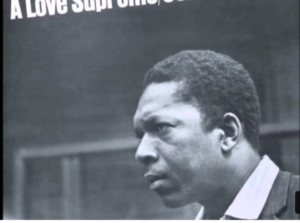Incoming.
November 15, 2020Seth Godin, author, public speaker, teacher:
“Standing at my desk this summer, it had just turned 10 am, and I realized that I’d already:
Heard from an old friend, engaged with three team members on two continents, read 28 blogs across the spectrum AND found out about the weather and the news around the world.
Half my life ago, in a similar morning spent in a similar office, not one of those things would have been true.
The incoming (and our ability to create more outgoing) is probably the single biggest shift that computers have created in our work lives. Sometimes, we subscribe or go and fetch the information, and sometimes it comes to us, unbidden and unfiltered. But it’s there and it’s compounding.
One option is to simply cope with the deluge, to be a victim of the firehose.
Another is to make the problem worse by adding more noise and spam to the open networks that we depend on.
A third might be, just for an hour, to turn it off. All of it. To sit alone and create the new thing, the thing worth seeking out, the thing that will cause a positive change.”
‘One thought…millions of vibrations.’
Recorded by John Coltrane in 1964.
A Love Supreme: 4th Movement – Psalm – In John Coltrane’s words.
‘Presented here, in his own handwriting, is that Psalm.’
From the Center for Action and Contemplation:
In “Psalm,” John Coltrane plays the “words” of his poem that was included in the original liner notes. He put this handwritten poem/prayer on the music stand in front of him, and “played” it as if it were music. Practicing Lectio Divina with this song may deepen your sense of prayer and add possible ways to pray. If you enjoy the practice with “Psalm,” we encourage you to try praying with other music. That is one of the beauties of Lectio Divina: it encourages us to “pray always.”
Before clicking on the following link to listen to John Coltrane’s “Psalm,”settle your body and begin with silence, asking God to be present in your listening.
Listen to “Psalm” and read along with the words from the poem that appear on the screen. Listen more than once. As you listen again, notice if any image, word, emotion, or memory is called forth in you.
When you settle on an image, word, emotion, or memory, sit silently with it and bring your attention back to it when your attention strays.
Ask God to reveal what this image, word, phrase, or emotion might have to say about your life today.? How is it connected to your spiritual journey?
Rest silently with your image, word, phrase, or emotion. Offer it to God. Wait patiently on God.
What would you like to express to God about the experience of praying with this piece of music? Take some time to journal about your experience.
Here are the opening lines of “Psalm”:
I will do all I can to be worthy
of Thee O Lord.
It All has to do with it.
Thank You God.
Peace.
There is none other.
God is. It is so beautiful.
Thank You God. God is All.
Help us to resolve our fears &
weaknesses.
In You All things are possible.
‘One thought can produce millions of vibrations.’ Indeed, physicist Dr. David’s Bohm theory of the holoflux, ‘the holistic principle of “undivided wholeness” with the idea that everything is in a state of process or becoming (Dr. Bohm calls it the “universal flux”). In this interpretation of physics wholeness is not considered static, but as a dynamic interconnected process. The concept is presented most fully in Wholeness and the Implicate Order, published in 1980.

